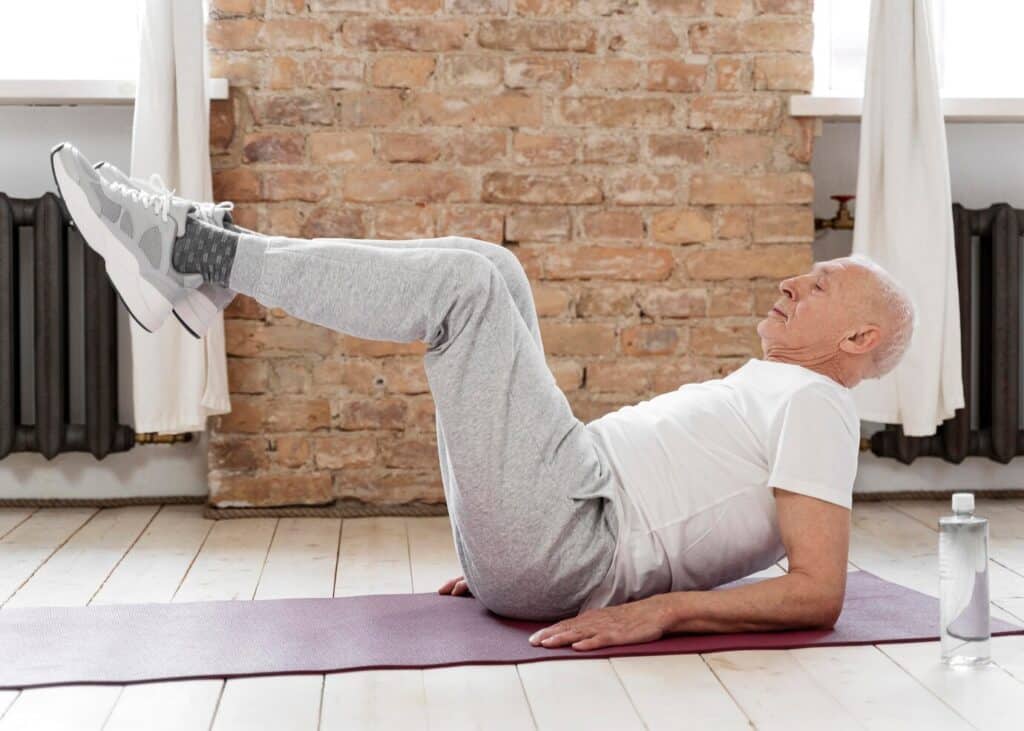
The Best Low-Impact Exercises to Improve Joint Health After 50
As we age, maintaining joint health becomes essential for staying active and pain-free. After the age of 50, joints naturally lose some of their flexibility and cushioning, making high-impact exercises harder on the body. However, incorporating low-impact exercises into your routine can strengthen muscles, reduce stiffness, and improve overall joint health without putting excess strain on your body. Whether you're managing arthritis, recovering from an injury, or simply staying fit, low-impact exercises are a game-changer for joint health.
In this article, we’ll explore the best low-impact exercises to improve joint health after 50, along with tips for incorporating them into your daily life.

Why Low-Impact Exercises Are Essential for Joint Health
Low-impact exercises are designed to reduce stress on your joints while still providing significant health benefits. Unlike high-impact workouts that involve jumping or running, low-impact activities focus on controlled movements that strengthen muscles, enhance flexibility, and improve circulation.
Benefits of Low-Impact Exercises for Joint Health
- Reduced Risk of Injury: They are gentle on joints, minimizing wear and tear.
- Improved Range of Motion: Stretching and movement can alleviate stiffness.
- Increased Strength: Building muscle around joints helps stabilize them.
- Pain Relief: Regular activity can reduce inflammation and chronic joint pain.
The Best Low-Impact Exercises to Improve Joint Health
1. Swimming and Water Aerobics
Swimming is often called the ultimate low-impact workout. It takes the weight off your joints while providing resistance that strengthens muscles.
- Why It’s Great: The buoyancy of water reduces pressure on knees, hips, and ankles.
- How to Get Started: Begin with simple laps or join a water aerobics class to combine cardio and strength training.
2. Walking
Walking is one of the simplest and most accessible low-impact exercises. It improves cardiovascular health while being gentle on the knees and hips.
- Why It’s Great: Walking promotes joint lubrication and strengthens surrounding muscles.
- Tips for Beginners: Use supportive footwear and aim for 20–30 minutes a day.
3. Yoga
Yoga is excellent for increasing flexibility, balance, and strength. It focuses on slow, controlled movements that ease tension in the joints.
- Why It’s Great: Yoga helps align the body and reduces inflammation.
- Recommended Poses: Try poses like the child’s pose, downward dog, and cat-cow for joint relief.
4. Cycling
Cycling, whether on a stationary bike or outdoors, is a great way to get your heart rate up without stressing your joints.
- Why It’s Great: It strengthens the lower body while improving joint mobility.
- Pro Tip: Adjust your seat height to avoid knee strain.
5. Pilates
Pilates focuses on core strength and stability, which helps support the spine and lower body joints.
- Why It’s Great: It targets small stabilizing muscles that are often neglected.
- How to Start: Join a beginner-friendly Pilates class or follow an online program.
6. Tai Chi
This ancient Chinese practice combines slow, deliberate movements with deep breathing. It’s particularly beneficial for older adults.
- Why It’s Great: Tai Chi enhances balance and flexibility while reducing joint stiffness.
- Getting Started: Look for community classes or follow a guided online session.
Tips to Maximize the Benefits of Low-Impact Exercise
1. Warm Up and Cool Down
Always begin with a warm-up to prepare your muscles and joints and end with a cool-down to reduce soreness.
2. Use Proper Equipment
Invest in supportive shoes, yoga mats, or resistance bands to enhance your workout.
3. Listen to Your Body
Avoid pushing through pain. If a movement feels uncomfortable, modify it or consult a professional.
4. Stay Consistent
Consistency is key. Aim for 150 minutes of low-impact activity per week, as recommended by health experts.
5. Consult a Specialist
If you have arthritis or other joint issues, work with a physical therapist to develop a safe, personalized exercise plan.
FAQs About Low-Impact Exercises and Joint Health
Q: Can low-impact exercises help with arthritis pain?
A: Yes, regular low-impact exercises like swimming and yoga can reduce arthritis pain by improving joint lubrication and strengthening surrounding muscles.
Q: How often should I do low-impact exercises?
A: Ideally, aim for 3–5 times a week, with a mix of cardio, strength training, and flexibility exercises.
Q: Are there any precautions I should take?
A: Start slow, wear appropriate gear, and avoid exercises that cause pain or discomfort.
Low-impact exercises are a powerful way to improve joint health and maintain mobility after 50. Whether you prefer the soothing motions of swimming, the mindful movements of yoga, or the simplicity of walking, these exercises can strengthen your body while protecting your joints. By staying consistent, listening to your body, and following proper techniques, you can enjoy a pain-free and active lifestyle for years to come.
Start small and stay committed—you’ll be amazed at the difference low-impact exercise can make!

Leave a comment